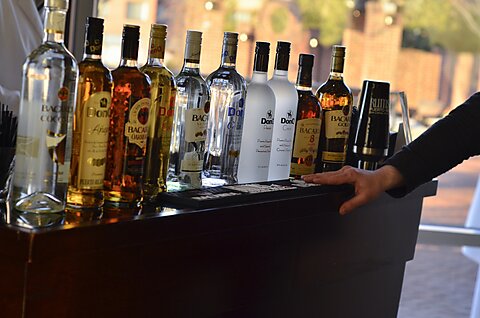
The Hidden Cost of Your Federally Subsidized Rum: The Rum Cover-Over Program
As Congress considers year‐end legislation, the rum cover‐over program has resurfaced, sparked by the beer industry’s critique of the program’s design. It’s a good opportunity to highlight the macabre cronyism created by this little‐known program that directly subsidizes a large portion of the rum consumed in the United States and around the world.
Under federal law, distilled spirits are subject to an excise tax, which can be as high as $13.50 per proof‐gallon. Most of the taxes collected on rum produced in Puerto Rico and the US Virgin Islands are returned to the respective governments. More than three‐quarters of the US tax collected ($10.50 per proof‐gallon) on rum produced internationally is split between the two territories based on their share of domestic production. The transfer of approximately $700 million a year in excise tax revenue from the US Treasury to the territories is called a “cover‐over.”
The $10.50 cover‐over has been increased temporarily to $13.25 on a recurring basis since the late 1990s, usually as part of a year‐end tax extenders package. The pulsed‐up amount lapsed at the end of 2022. Now, there’s a fight between the brewers and the rum distillers over whether to return to the higher cover‐over.
The fight is tied up in a broader disagreement caused by poorly designed differences in how beer and spirits are taxed, creating disparities in the tax treatment of hard seltzers. The best policy would be for Congress to repeal the cover‐over program (if not all federal excise taxes).
In the mid‐2000s, the millions of dollars of cover‐over revenue sparked a rum‐subsidy war between the two territories when the Virgin Islands lured Diageo (owners of Captain Morgan) away from Puerto Rico. In 2010, Javiar Vazquez asserted that the subsidy—which included money for building a new distillery, income and property tax breaks, direct payments to cover operating expenses, and a portion of annual cover‐over revenue—“is so huge that the net cost to Diageo to produce rum is zero.”
So as to not lose their share of rum tax proceeds, Puerto Rico responded with its own subsidies. According to the Center for Investigative Journalism, the cover‐over program has padded the profits of Cruzan, Don Q, Club Caribe, and Bacardi, the last of which admitted the subsidies did not help create new jobs on the island. The subsidies also extend up the rum supply chain, subsidizing molasses production and sugar cane harvesting.
The design of the cover‐over program has forced Puerto Rico and the US Virgin Islands into a lose‐lose competition in which they manipulate their rum industries to maximize federal subsidies—most of which are plowed back into the subsidy wars. US mainland rum distillers also lose as their large incumbent rivals receive lavish funding for production in the territories.
Though initially framed as vital fiscal aid for the struggling territories, the cover‐over program’s operation tells a different story. The cover‐over payments tend to destabilize local government budgets due to fluctuating cover‐over amounts and constant lobbying for additional production subsidies. The subsidies can cost more than the benefit from the cover‐over, and create problems when production moves. For example, when Captain Morgan moved to the Virgin Islands, it left a hole in the Puerto Rican budget as the cover‐over revenue followed the production.
At the very least, Congress should not renew the temporarily higher cover‐over amount in a year‐end package. The program’s uncertain and sporadic reauthorization over the past several decades has only exacerbated Puerto Rico and the US Virgin Island’s fiscal challenges.



